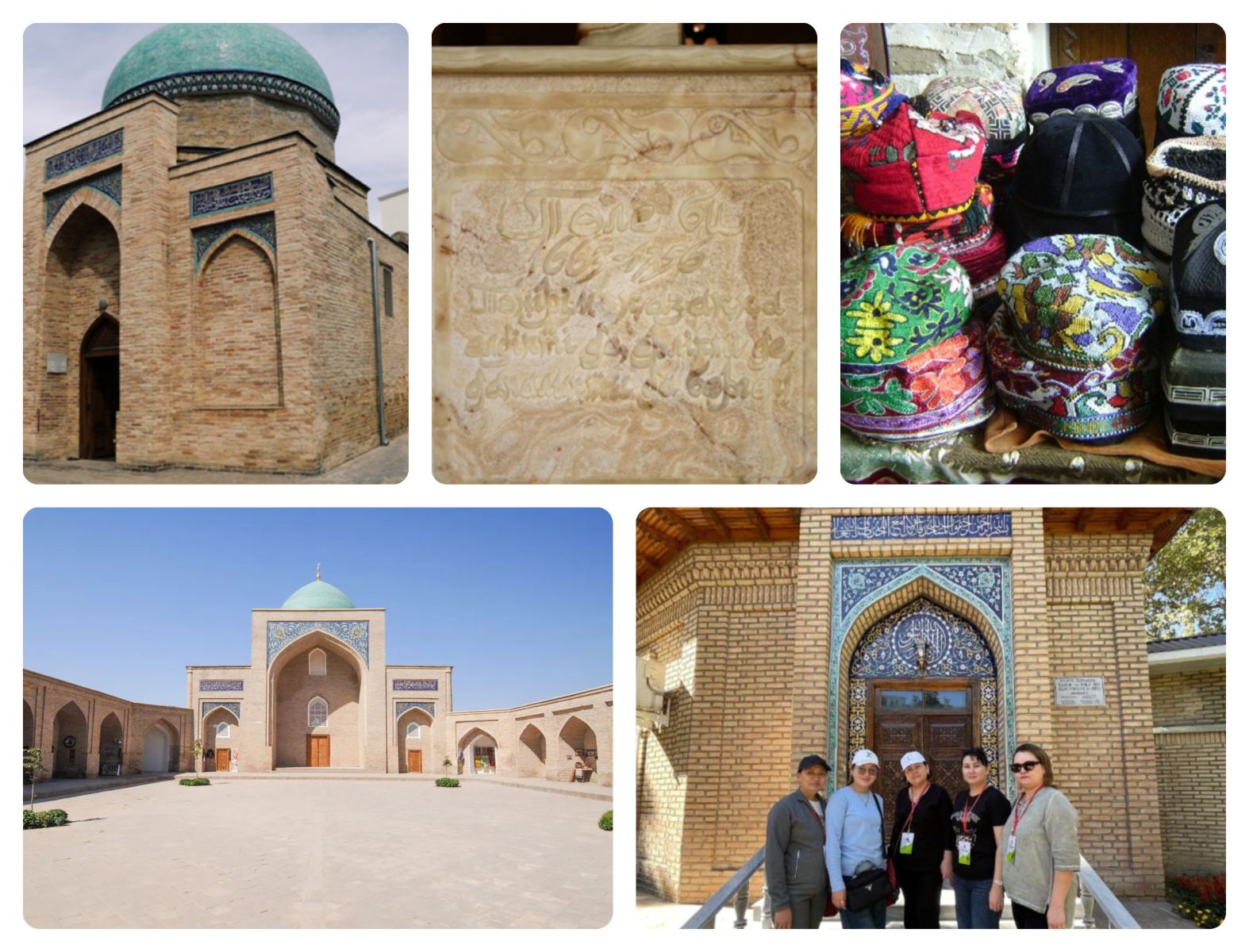Historical, educational, scientific and research excursion to Tashkent.

The composition of teachers and professors of the department “History of Kazakhstan and social and public disciplines” organized a historical, educational and research excursion to the city of Tashkent.
Goal: to get acquainted with the historical heritage of the Republic of Uzbekistan on the basis of a plan for the implementation of project-oriented training, within the framework of the topic: “Interethnic harmony of Kazakhstanis is the key to strengthening independence and democracy.” A trip to Tashkent is a great opportunity to travel to a city in Central Asia, rich in history and culture, with centuries-old traditions. Tashkent attracts tourists with its ancient historical monuments, cultural and spiritual heritage, as well as modern development. The combination of antiquity and modernity is especially noticeable here, which gives the city a special attractiveness. The excursion began from the Sheikhantaur mausoleum, located in the city of Tashkent. Sheikhantaur Mausoleum is the oldest surviving memorial complex. The main feature of this complex is that Tole bi Alibekuly, bi of the Senior Zhuz, statesman, orator (sheshen), adviser to Khan Tauke, is buried here. The Mausoleum of Karlygach-biy (Tole bi) was built in the first half of the 15th century in the city of Tashkent. Here lie the ashes of the eminent political figure, Kazakh Tole bi “Karlygach”, which means (“Swallow”), hence the name of the mausoleum. Tole bi ruled Tashkent for six years - from 1743 to 1749. Inside the Sheikhantuar mausoleum there is a tall dried tree resting on the ceiling of the dome. The caretaker of the mausoleum said that this tree is called saur of Iskander (Alexander of Mackendon - author's note). It is the only one of 48 saurs (a type of coniferous juniper) planted during the campaign of Alexander the Great across Central Asia and preserved to this day. During the historical visit, we got acquainted with the national parks and historical museums of Tashkent, the crafts and traditions of the local people. The trip was not limited to visiting and getting acquainted with historical sites, but continued with scientific and public programs.
Along with educational activities, this excursion had great educational and entertainment value.
 386 views
386 views
